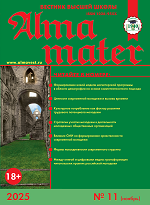UDC 314+332.1
https://doi.org/10.20339/AM.11-20.103
V.A. Bezverbny is Cand.Sci. (Economy), Head of Department of Geo-Urban and Space Development, Deputy to the Director; and N.Yu. Mikryukov is Cand.Sci. (Geography), Scientific Researcher in Department of Geo-Urban and Space Development. Both at Center of Social Demography of ISPR FCTAS RAS
Analyzed is one of the most relevant “big challenges” for Russia is the exhaustion of opportunities for economic growth. That is largely due to ineffective system of spatial organization of the country’s economy and low connectivity of its regions. Disproportions in distribution of productive forces and, in particular, of population, reinforces already existing very high degree of socio-economic differentiation of country’s regions, complicates development of resource centers and Eastern territories, creates shortage of demand in labor market and overconcentration of resources in European part of Russia. The model for development of 15–20 agglomerations that can compete with each other for human capital and form an alternative to Moscow and St. Petersburg agglomerations on national scale, is seen as common project for optimizing trends in spatial development and the system of settlement of the country, presented by leading economists and statesmen. However, implementation of this project may have various negative scenarios and serious socio-economic risks for small and single-industry cities of Russia, which explains relevance of a systematic study and modeling of possible scenarios, as well as socio-economic effects on development of new agglomerations. Single-industry cities are important structural element of the settlement system and economy of the country. The main production and economic basis for development of single-industry towns are their city-forming enterprises, often with unique industries, technologies and personnel base. However, in the current period of time significant part of single-industry towns in Russia is experiencing serious socio-economic and demographic problems, expressed in intensive migration and natural population decline, decrease in economic potential of city-forming enterprises, increase in unemployment and social tension. Solution to demographic and social problems of single-industry towns directly depends on development of city-forming economy. Presented article examines trends in socio-economic and demographic development of mono-cities in Sverdlovsk and Chelyabinsk regions, and also presents recommendations for overcoming of corresponding problems.
Key words: single-industry towns, company towns, city-forming enterprises, diversification, Ural, resettlement system, local economy.
References
1. Bezverbny, V.A. Modeling of scenarios of demographic development of Russia up to the year of 2050. Scientific survey. 2015. No. 5. P. 68–73.
2. Mikryukov, N.Yu. Mono-profile settlements of Russia in systems of town settling. Regional researches. 2015. No. 3 (49). P. 99–107.
3. Fomin, M.V. Social stability as factor of economic and political development of modern Russia. In: Prognosis of social-political processes and conflicts in Western countries and Russia. Moscow, 2016. P. 147–162.
4. Base of data of indicators of municipal settlements by Rosstat. URL: https://rosstat.gov.ru/storage/mediabank/munst.htm











.png)






